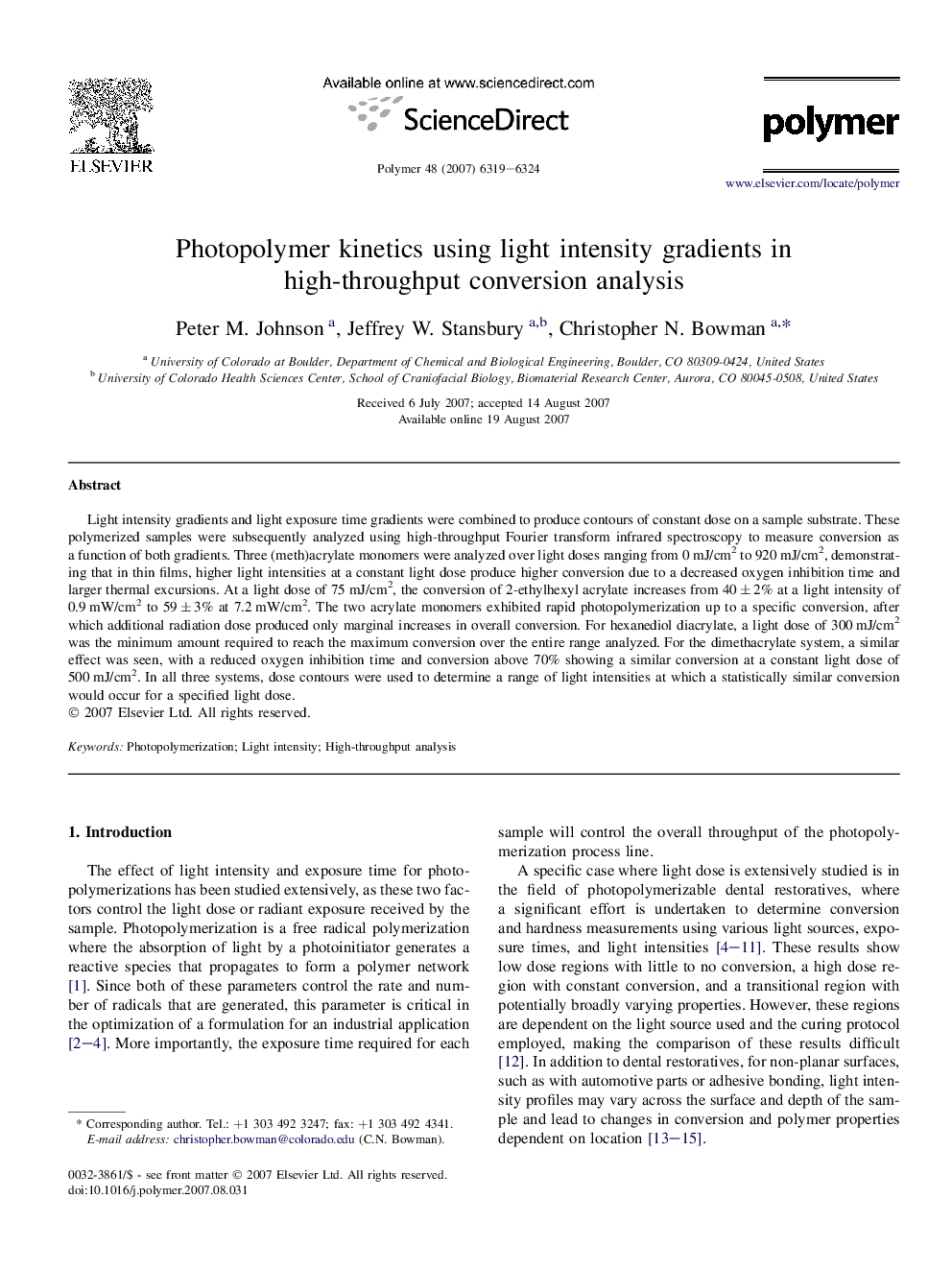| Article ID | Journal | Published Year | Pages | File Type |
|---|---|---|---|---|
| 5188525 | Polymer | 2007 | 6 Pages |
Abstract
Light intensity gradients and light exposure time gradients were combined to produce contours of constant dose on a sample substrate. These polymerized samples were subsequently analyzed using high-throughput Fourier transform infrared spectroscopy to measure conversion as a function of both gradients. Three (meth)acrylate monomers were analyzed over light doses ranging from 0 mJ/cm2 to 920 mJ/cm2, demonstrating that in thin films, higher light intensities at a constant light dose produce higher conversion due to a decreased oxygen inhibition time and larger thermal excursions. At a light dose of 75 mJ/cm2, the conversion of 2-ethylhexyl acrylate increases from 40 ± 2% at a light intensity of 0.9 mW/cm2 to 59 ± 3% at 7.2 mW/cm2. The two acrylate monomers exhibited rapid photopolymerization up to a specific conversion, after which additional radiation dose produced only marginal increases in overall conversion. For hexanediol diacrylate, a light dose of 300 mJ/cm2 was the minimum amount required to reach the maximum conversion over the entire range analyzed. For the dimethacrylate system, a similar effect was seen, with a reduced oxygen inhibition time and conversion above 70% showing a similar conversion at a constant light dose of 500 mJ/cm2. In all three systems, dose contours were used to determine a range of light intensities at which a statistically similar conversion would occur for a specified light dose.
Related Topics
Physical Sciences and Engineering
Chemistry
Organic Chemistry
Authors
Peter M. Johnson, Jeffrey W. Stansbury, Christopher N. Bowman,
